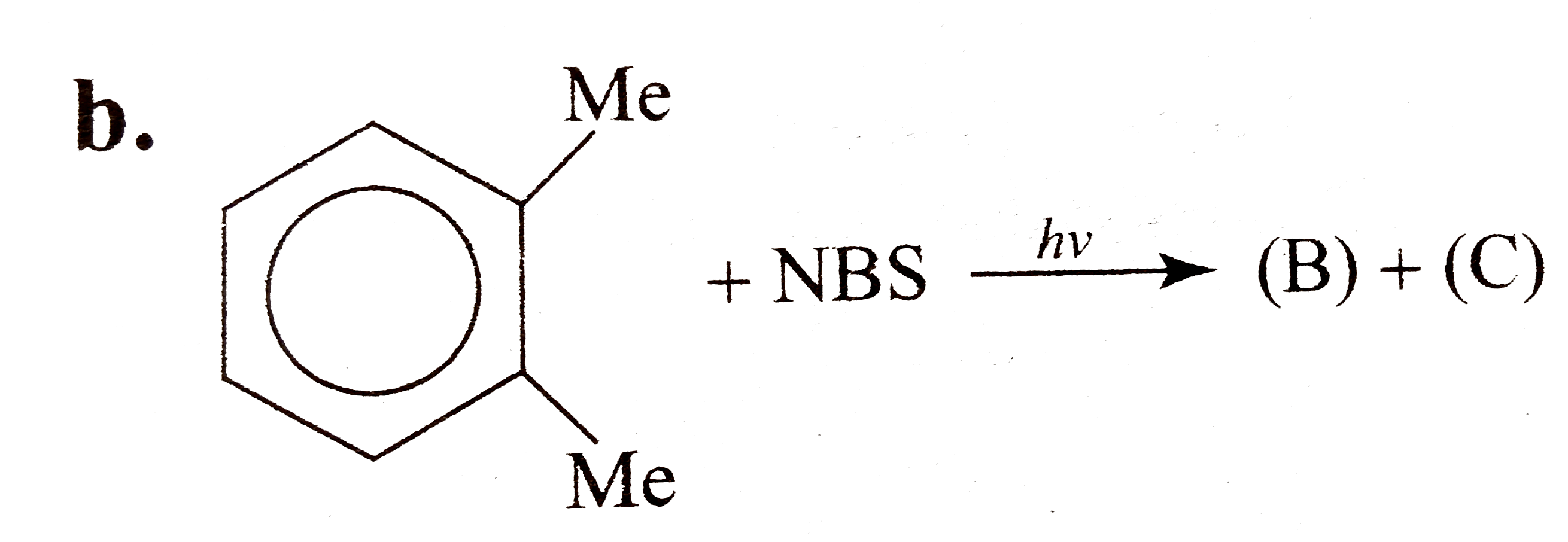When two reactants A and B are mixed to give products C and D, the reaction quotient (Q) at the initial stages of the reaction
Is zero
Decreases with time
Is independent of time
Increases with time
The correct Answer is:A
To solve the question regarding the reaction quotient (Q) when two reactants A and B are mixed to form products C and D, we can follow these steps:
1. Understand the Reaction: The reaction is given as:
A+B→C+D
Here, A and B are the reactants, and C and D are the products.
2. Define the Reaction Quotient (Q): The reaction quotient (Q) is defined as the ratio of the concentrations of the products to the concentrations of the reactants at any point in time. It can be expressed as:
Q=(C)(D)(A)(B)
where (C), (D), (A), and (B) are the molar concentrations of the respective species.
3. Initial Concentrations: At the initial stage of the reaction (when the reactants are first mixed), we assume:
- The concentration of A is C1.
- The concentration of B is C2.
- The concentrations of products C and D are both zero, since the reaction has just started.
4. Calculate Q at Initial Stage: Substitute the initial concentrations into the expression for Q:
Q=(C)(D)(A)(B)=0×0C1×C2
Since the concentrations of C and D are zero, the equation simplifies to:
Q=0C1×C2=0
5. Conclusion: Therefore, at the initial stage of the reaction, the reaction quotient (Q) is equal to zero.
Final Answer:
The correct answer is Option A: 0.
A+B→C+D
Here, A and B are the reactants, and C and D are the products.
Q=(C)(D)(A)(B)
where (C), (D), (A), and (B) are the molar concentrations of the respective species.
- The concentration of A is C1.
- The concentration of B is C2.
- The concentrations of products C and D are both zero, since the reaction has just started.
Q=(C)(D)(A)(B)=0×0C1×C2
Since the concentrations of C and D are zero, the equation simplifies to:
Q=0C1×C2=0
The correct answer is Option A: 0.
Topper's Solved these Questions
- CHEMICAL EQUILIBRIUMBOOK - CENGAGE CHEMISTRY ENGLISHCHAPTER - CHEMICAL EQUILIBRIUMEXERCISE - Exercises (Single Correct)
58 Videos
- CHEMICAL EQUILIBRIUMBOOK - CENGAGE CHEMISTRY ENGLISHCHAPTER - CHEMICAL EQUILIBRIUMEXERCISE - Exercises (Assertion-Reasoning)
15 Videos
- CHEMICAL EQUILIBRIUMBOOK - CENGAGE CHEMISTRY ENGLISHCHAPTER - CHEMICAL EQUILIBRIUMEXERCISE - Exercises (Linked Comprehensive)
54 Videos
- CHEMICAL BONDING AND MOLECULAR STRUCTUREBOOK - CENGAGE CHEMISTRY ENGLISHCHAPTER - CHEMICAL BONDING AND MOLECULAR STRUCTUREEXERCISE - Archives Subjective
15 Videos
- CLASSIFICATION AND NOMENCLATURE OF ORGANIC COMPOUNDSBOOK - CENGAGE CHEMISTRY ENGLISHCHAPTER - CLASSIFICATION AND NOMENCLATURE OF ORGANIC COMPOUNDSEXERCISE - Analytical and Descriptive Type
3 Videos
Similar Questions
Read the following paragraph and answer the questions given below ,
Stable equilibrium is of various types . Mechanical equilibrium is achieved when all particles are at rest and total potential energy of the system is minimum . At any stage where particles are at rest but the system is not at stable equilibrium as it can reduce its potential energy by reverting to another position, is called metastable equilibrium . Thermal equilibrium is result from the absence of temperature gradients in the system. Chemical equilibrium is obtained when no further reaction occurs between reacting substances, i.e forward and reverse rates of reaction are equal. When steam with solid iron at high temperature Fe3O4(s) and hydrogen gas are produced . But the reaction never goes to completion. This is because as the products are formed the reaction proceeds in reverse direction and when rate of reverse reaction is equal to rate of forward reaction , the concentration of reactants and products become constant and equilibrium is reached.
When two reactants (A) and (B) are mixed to give products (C) and (D) the concentration quotient (Q) at initial stage of the reaction
View SolutionThe reaction Quotient (Q) predicts:
View Solution
Give the products (B) and (C) in the above reaction.
View SolutionIf two reactants part in a reaction, then:
View SolutionGive the products of the reactions given below.
b.
c.
d.
e.
View Solutionconsider the reaction 2Ag+Bg⇔2Cg for which Kc=350. if 0.001 mole of each of the reactant and product are mix in a 2.0 L flux in the reaction quotient and spontaneous direction of the system will be
View SolutionConisder the following elementary reaction,
2A+B+C→ Products. All reactants are present in the gaseous state and reactant C is taken in excess.
What is the unit of rate constant of the reaction?
View SolutionThe rate of reaction between two reactants A and B decreases by factor 4 if the concentration of reactant B is doubled. The order of this reaction with respect to B is
View SolutionConsider reaction in which reactant R is converted into product P: R→P. When the initial concentration of R′ is 0.5M The half life of the reaction is 20 minute. When the initial concentration is increased to 1.3 M, the half life decreases to 7.69 minute.
Q. What is the rate canstant of the reaction?
View SolutionAn organic compound A has the molecular formula of C7H6O. When A is treated with NaOH followed by acid hydrolysis, it gives two products, B and C. When B is oxidised, it gives A. When A and C are each treated separately with PCl5, they give two different organic products D and E.
Give the chemical reaction when A is treated with NaOH and name the reaction.
View Solution
